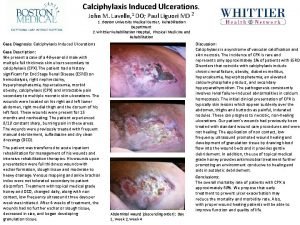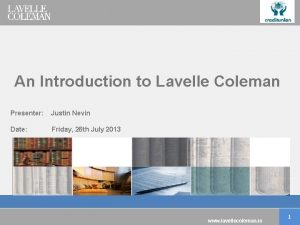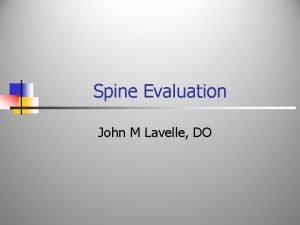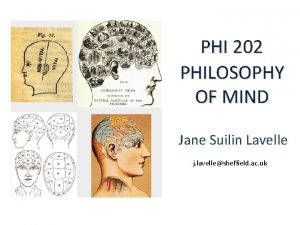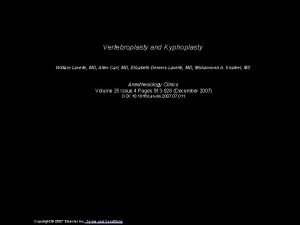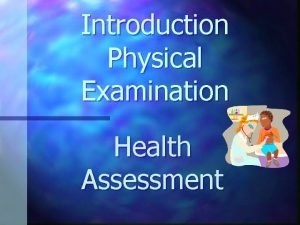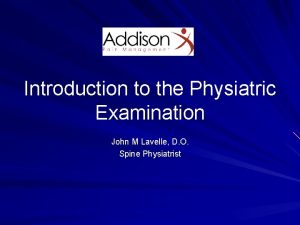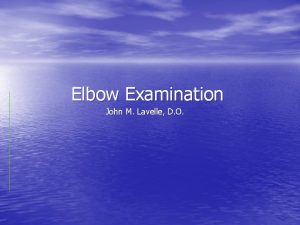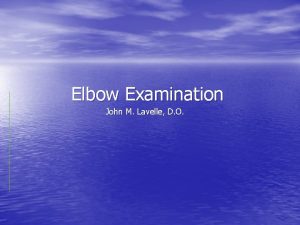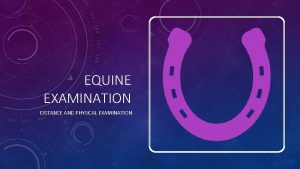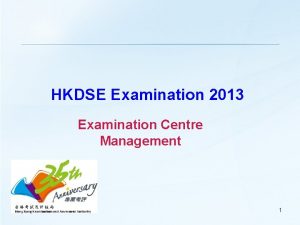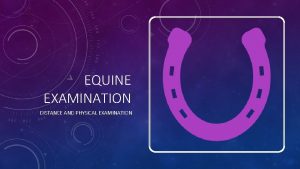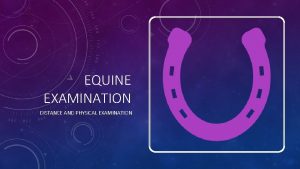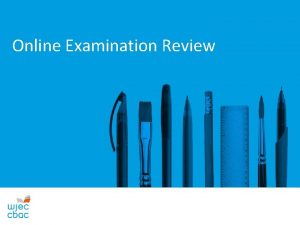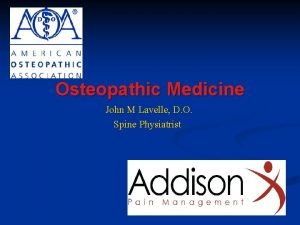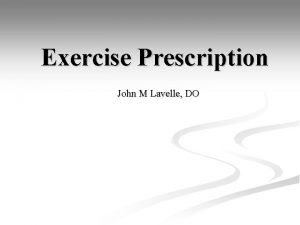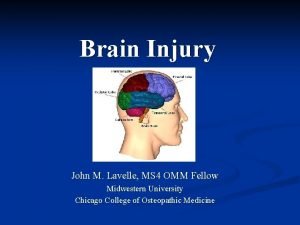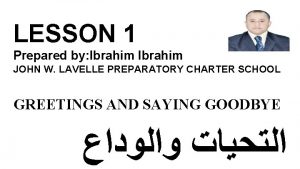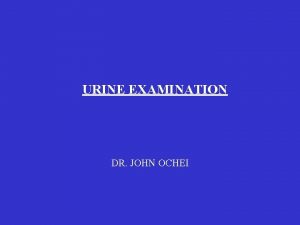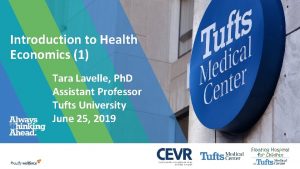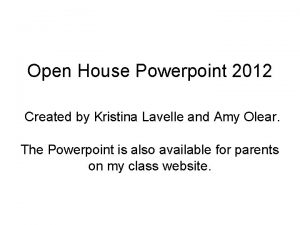Introduction to the Physiatric Examination John M Lavelle






































- Slides: 38

Introduction to the Physiatric Examination John M Lavelle, D. O. Spine Physiatrist

Rehabilitation Evaluation of Function – Encompasses the entire general medical history and physical examination – Must ascertain the functional consequence of the medical diagnosis/disease that constitutes the rehabilitation diagnosis – Determine impairment and treat to prevent or minimize disability and handicap

Rehabilitation Evaluation It is comprehensive – not limited to a single organ system – Attention paid to whole person – Return person to the fullest possible mental physical social and economic independence

Patient History Chief Complaint HPI Functional History PMHx FHx Sx. Hx Meds ROS

Chief Complaint Pt’s primary concern in his or her own words – Typically an impairment in the form of a symptom that implies a certain disease “My hands ache and go numb when I drive” – Carpal Tunnel

HPI Story of the medical problem – LISTEN – Gently guide the conversation – Document handedness Onset, location, duration, quality, context, severity, modifying factors (aggravating/alleviating), and associated S&S, other treatments

Functional Hx Characterizes the disabilities that have resulted from the disease and documents remaining capabilities. Also document level of function prior to disease. Discuss: Communication, eating, grooming, bathing, toileting, dressing, transfers, mobility.

ADL’s/i. ADL’s Activities of daily living (ADLs)- bathing, toileting, dressing, eating, hygiene & grooming Instrumental ADLs- meal preparation, laundry, telephone use, home maintenance, pet care

Communication Hearing Speaking Reading Writing

Eating Difficulty leads to aspiration pneumonitis, malnutrition and depression. Can tolerate solids vs liquids?

Grooming Inability can impact body image and self esteem, social sphere and vocational opportunities.

Bathing Can lead to obvious psychosocial issues. Inability causes skin maceration and ulceration, infections and spread of diseases.

Toileting Incontinence of stool or urine to the cognitively intact person can be very detrimental psychosocially. – Impairs social and employment opportunities. – “Loss of dignity” – Leads to skin breakdown, infections, ulcers. Check indwelling caths

Dressing We dress to go out of the house. Dependence in dressing causes severe limitations in independence.

Transfers/Mobility How get around? – – – Bed mobility Around house/community Wheelchair mobility, ambulation, driving & devices required

PMHx Comorbidities important Characterize the patient's baseline functional level. Diagnosis and Impact of specific conditionscardiopulmonary, musculoskeletal, neurologic & rheumatologic

ROS Need 10! – – – – – HEENT Neuro CV Resp GI GU Skin MSK Endo ID

Social Hx Family: married, kids Home environment: architectural barriersstairs, elevator, small house Support: family and friends support systems Psychiatric History – How deal with stress, anxiety issues, depression Diet – adequate nutrition important

Social Hx Substance abuse: Et. OH, Illicits, Tobacco Vocation: work/education Sexual history Lifestyle: – Recreational activities: reading sports, etc – Exercise – Spirituality Finances: disability, unemployment Litigation

Family Hx Hereditary diseases – h/o anxiety, depression, chronic pain, arthritis, CVA, MI, etc

Physical Examination Vitals: Temp, Hr, RR, BP, Si. O 2, I/O’s, Pain Skin/lymphatics: turgor, color, swelling Head: lacerations, deformities, inequalities Eyes: ptosis, symmetric, vision Ears: hearing, wax, bleeding Mouth and Throat: Moist membranes, masses, tongue/uvula midline, gag Neck: JVD, ROM

PE Chest: symmetric, excursion Heart and Lungs: Auscultate! Abdomen: BS, palpate GU: Urinating (I/O’s), foley, ED? GI: Rectal, hemorrhoids

MSK Inspect: asymmetry, wasting A/PROM Palpate: muscles, joint stability

Neuro Mental Status: LOC: – – – Orientation Attention Recall Gen fund of knowledge Calculations Proverbs Leave no stone unturned A rolling rock never grow moss If you play with fire you get burned. – Judgements What would you do if a fire alarm goes off What do if you found stamped, addressed envelope

Neuro Speech and Language – Wernicke: receptive aphasia-impaired comprehension – Broca: expressive aphasia - non-fluent – Global: non-fluent, poor comprehension – Transcortical motor: good comprehension, preserved repetition, reduced speech – Transcortical sensory; poor comprehension, good repetition, fluent speech – Conduction: reduced repetition

Neuro Cranial Nerves

Neuro – Muscle tone – spasticity, rigidity, hypotonicity – Coordination – FNF, HTS – Involuntary movt’s – Perception – agnosia, Rt/Lt neglect – MMT, DTR’s, Sensation

Functional Exam Eating, groomin, bathing, dressing, toileting Transfers Mobility

Functional capability Level of independence in: – – – Ambulating Communicating Dressing Eating, Personal Hygiene Transfers

Assesment Diagnosis & Description of status (improving, stable, declining)…ie: improving Lt hemi 2/2 Rt MCA CVA due to hypertensive episode. Eligibility for Acute rehabilitation (ability to participate in 3 hours of rehabilitation per day, as well as identifiable benefit from OT/PT/Speech Therapy) Setting for further interventions if not acute – Home: 24 hr supervision, Day Rehab, outpatient PT/OT/RN – SNF – LTAC

PLAN List by system or problem with treatment plan: – Neuro: CVA- admit to acute rehab for …. – CV: HTN – con’t metorpolol, goal SBP 140 -160… Provide prognosis: – Good recovery: able to return to work or school – Moderate disability: able to live independently; unable to return to work or school – Severe disability: able to follow commands/unable to live independently – Persistent vegetative state: unable to interact with environment; unresponsive Recommendation goals: short and long term

History of PM&R Physiatry derives from the Greek words physikos (physical) and iatreia (art of healing). Separate medical specialty since 1947. Written accounts of physical techniques for healing can be seen as far back as the writings of Hippocrates in 400 B. C. Formal education for Physiatry had its beginning in 1926 when, after service in the U. S. Army during World War I, Dr. John Stanley Coulter joined the faculty of Northwestern University Medical School as the first fulltime academic physician in physical medicine.

History of PM&R Dr. John Stanley Coulter initiated the first continuing teaching program in physical medicine. – Consisting of short courses of three to six month's duration for physicians in practice 1930's brought further organization and purpose to the field of rehabilitation. – Training programs for physical therapy technicians existed, but these were standardized by the formation of The American Registry of Physical Therapists Frank Krusen, MD, established the Physical Medicine Program at the Mayo Clinic in 1936 and initiated the first three-year residency in Physical Medicine. – Drs. Coulter and Krusen led the organization of the American Academy of Physical Medicine in 1938

History of PM&R Dr. Krusen coined the word "Physiatrist“ – Described the small group of physicians who were dedicated to the approach of adding physical medicine to medical therapeutics to treat neurological and musculoskeletal disorders Krusen wrote the first textbook on Physical Medicine in 1941. – He is recognized as the "Father of Physical Medicine. " In 1946, the AMA Council on Physical Medicine voted to sponsor the term "physiatrist" (fizz-ee-at'-trist) and physiatry (fizz-ee-at'-tree) with the accent on the third syllable

History of PM&R Howard A. Rusk, MD, an internist, as a result of his experience in the Army Air Corps Convalescent and Rehabilitation Services at Jefferson Barracks in World War II, recognized that passive, inactive, non-physical convalescence resulted in both physical and emotional deterioration of soldiers recovering from accident or illness. Dramatic and more rapid recovery of strength and endurance and the much more rapid return to active duty due to the benefits of planned aggressive rehabilitation – Army Air Corps extended the program to all of its hospitals, and shortly thereafter, it was extended throughout the military services. – The Medical War Manpower Board recognized the great value of active rehabilitation and introduced it into civilian medical practice.

History of PM&R Rusk went to New York's Bellevue Hospital where he began his 30 -year campaign to train physicians and establish rehabilitation programs to treat the whole patient. Rusk's earned recognition as "the Father of Rehabilitation Medicine. “

History of PM&R By 1946, 25 medical residencies or fellowships in PM&R had been established. In January 1947, the Advisory Board of Medical Specialties (now the American Board of Medical Specialties) formally recognized the American Board of Physical Medicine. – Two years later, at the urging of Dr. Rusk, the name was changed to include "Rehabilitation. "

Thank You
 John lavelle md
John lavelle md Lavelle coleman
Lavelle coleman Lermittes
Lermittes Suilin lavelle
Suilin lavelle Billy lavelle
Billy lavelle Physical examination introduction
Physical examination introduction Hình ảnh bộ gõ cơ thể búng tay
Hình ảnh bộ gõ cơ thể búng tay Frameset trong html5
Frameset trong html5 Bổ thể
Bổ thể Tỉ lệ cơ thể trẻ em
Tỉ lệ cơ thể trẻ em Chó sói
Chó sói Tư thế worm breton là gì
Tư thế worm breton là gì Hát lên người ơi
Hát lên người ơi Môn thể thao bắt đầu bằng từ đua
Môn thể thao bắt đầu bằng từ đua Thế nào là hệ số cao nhất
Thế nào là hệ số cao nhất Các châu lục và đại dương trên thế giới
Các châu lục và đại dương trên thế giới Công thức tính thế năng
Công thức tính thế năng Trời xanh đây là của chúng ta thể thơ
Trời xanh đây là của chúng ta thể thơ Mật thư anh em như thể tay chân
Mật thư anh em như thể tay chân 101012 bằng
101012 bằng độ dài liên kết
độ dài liên kết Các châu lục và đại dương trên thế giới
Các châu lục và đại dương trên thế giới Thể thơ truyền thống
Thể thơ truyền thống Quá trình desamine hóa có thể tạo ra
Quá trình desamine hóa có thể tạo ra Một số thể thơ truyền thống
Một số thể thơ truyền thống Cái miệng bé xinh thế chỉ nói điều hay thôi
Cái miệng bé xinh thế chỉ nói điều hay thôi Vẽ hình chiếu vuông góc của vật thể sau
Vẽ hình chiếu vuông góc của vật thể sau Biện pháp chống mỏi cơ
Biện pháp chống mỏi cơ đặc điểm cơ thể của người tối cổ
đặc điểm cơ thể của người tối cổ V cc
V cc Vẽ hình chiếu đứng bằng cạnh của vật thể
Vẽ hình chiếu đứng bằng cạnh của vật thể Fecboak
Fecboak Thẻ vin
Thẻ vin đại từ thay thế
đại từ thay thế điện thế nghỉ
điện thế nghỉ Tư thế ngồi viết
Tư thế ngồi viết Diễn thế sinh thái là
Diễn thế sinh thái là Dạng đột biến một nhiễm là
Dạng đột biến một nhiễm là Thế nào là số nguyên tố
Thế nào là số nguyên tố
